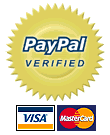your basket is empty
The original Hibiscus x rosa-sinensis only had the wild species Hibiscus cooperi and Hibiscus kaute as parents. Whereas the so called modern tropical hibiscus hybrids have been bred by crossing Hibiscus x rosa-sinensis with several other species from Hibiscus section Lilibiscus. Many of these hybrids show a bottleneck effect due to inbreeding over several generations and/or are genetically unfit due to interfering genes from multiple involved species. As a result many of these hybrids are horticulturally inferior with much deformed petals and/or are that weak that they need to be grafted for propagation purposes. For hybridizing we have chosen vigorous and healthy plants only. We also include the wild species Hibiscus cooperi in the selection 'Nasilai Pink', as well as Hibiscus arnottianus and Hibiscus waimeae as pollen donors. The latter two Hawaiian endemic species also have quite large, and above slightly perfumed white flowers, as well as an overall rather compact and very healthy growth habit. The aim is to add new genes to hybrids in order to improve their genepool and overall robustness.
Seedling plants from all our crosses will show a whole array of new color combinations, not a single one will be alike. Some may have flowers being close to one of the parents, yet most will be quite uniquely distinct. Thus said, and as in all hibiscus hybrids, colors are mostly unpredictable, and seed raised plants will never have the same color as their parent(s). Some may be rather pastel shaded, some may exhibit an even darker color than the parents, some may show a uniform color, while others will develop multiple color shades. Be it as it is, these will never be alike the mostly boring, seen-a-thousand-times hybrids you may usually find at your local garden store. And with some very, very good luck, some offsprings may even inherit the parfumed flowers from the male Hawaiian parent. However, the gene for fragrance development is recessive, i.e. normally plants with fragrant flowers will only appear in the F2 generation - which gives you some exciting opportunities to create your own hybrids.
You may find some"bargain" offers on several well known selling platforms, where packs with 50 or even 100 seeds from supposedly tropical hibiscus hybrids are offered at a ridiculously low price. Be aware that these are scams. These fraudulous sellers will not send you any tropical hibiscus seeds, but whatever seeds from other plants they may have handy, and sometimes dry debris only. Just do a reverse image search for the displayed photo(s) - almost all fraudulous sellers use eye-catching, yet "borrowed" photos from the web, without permission from the copyright owner, nor give they any credit to the real photographer. Tropical hibiscus produce very few seeds only. Most capsules may contain whatever between 1 to 10 seeds only, rarely more. Not ot mention that quite a lot of capsules are aborted before they even mature. In general less than 10% of hand pollinated flowers will eventually form a seed capsule. Thus true tropical hibiscus seeds are always scarce and thus (subjectively) high priced. And especially our crosses with Hibiscus waimeae are simply unique and precious, as this species has not been used in hybridization on a larger level so far, and less than 3% of crosses are successful. This means that from 100 hand pollinated flowers only some 3 may form a capsule which then may contain a couple of seeds inside.
Last but no least, a word on virus infections, which are becoming a more and more serious topic in plant collections throughout the world. To start with: our plants do not show any signs of a virus infection. However, this does not necessarily mean that plants are virus free. Probably all plants you can buy at nurseries and garden centers carry one or multiple virus from different virus groups and strains. Yet most of these virus remain latent and they will not harm plants under normal conditions. Some of these virus may become active in very stressed plants, and only then you may see some symptoms of an infection. Yet these symptoms usually are reversible - plants will return to a normal growth habit, once growing conditions are more suitable, and their immune system can keep these virus at bay again. This is very much the same in animals, as well as in humans (just think of an annoying herpes virus which may become active when you are very stressed and your body immune system is somewhat down). On the other hand there is another group of really devastating virus types which do harm plants. These extremely dangerous virus are always active once they have infested a plant. The most common symptoms in hibiscus (depending on the virus type) are chlorotic spots, mosaic veining and curly leaves. Infested plants will not grow well anymore and especially in hibiscus most flowering buds are aborted before opening. And if flowers do open, they are usually deformed. Very stressed plants may even die due to the infection. Unfortunately there are many private growers, as well as commercial nuseries, offering plants and seeds (the latter also being carriers of these virus!) from obviously virused plants. For example a very concerning group of Begomovirus (causing severe leaf curl, for example) has been spreading in many hibiscus collections, especially throughout the Indian subcontinent and southeastern Asia (including Taiwan). These hazardous virus types are easily spread from one plant to another, and all virus infections are irreversible. Once a plant carries a virus, the virus will stay in the plant forever. The only remedy is to eliminate all infested, as well as all nearby plants (inluding pots and soil), and in heavily infested collections (as we have seen in India, for example), these may be all plants. Thus, never ever acquire any plant material (neither plants nor seeds) from a grower who has even a single obviously virus infected plant. For the amateur gardener it may be hard to identify a severely virused plant. The more so, as most tropical hibiscus hybrids naturally do not have perfectly even leaves, but usually have some slightly undulated edges, a wavy or slightly crispy surface, etc. This is not caused by a virus infection, but due to some minor genetic incompatability between mother plants, and it is nothing to worry about. If you think that you may have a virused plant, take a close-up photo from the leaves and post it to one of the internet hibiscus groups, for example the Facebook group of the Internationl Hibiscus Society (IHS), where there are many expert growers around. And for the time being immediately move this particular suspiciously looking plant into quarantine, far away from your other plants.
Below you find all our mother plants of tropical hibiscus hybrids and wild hibiscus species that we use for crossing. Most of our hybrids were bred on the Canary islands, and are markted locally only under their commercial names. These tropical hibiscus hybrids have not been registered officially as cultivars (*), and seeds have not been offered before anywhere in the world. This gives you a unique opportunity to add new genes to older hybrid lines.
All photos have been taken from our own plants, and colors have not been manipulated by any image enhancing program.
 |
Hibiscus 'Abián' |
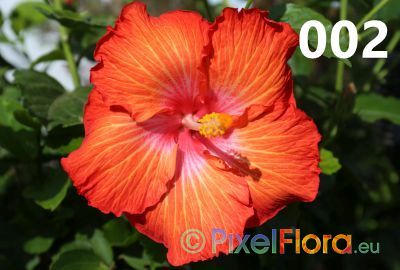 |
Hibiscus 'Acorán' |
 |
Hibiscus 'Adarillo' |
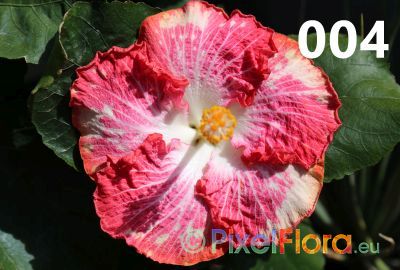 |
Hibiscus 'Adeún' |
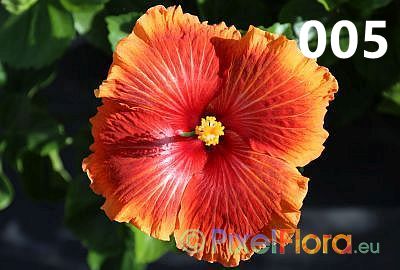 |
Hibiscus 'Afur' |
 |
Hibiscus 'Aindar' |
| 007 | Hibiscus 'Aray' |
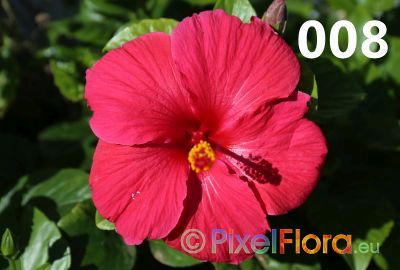 |
Hibiscus 'Badenol' |
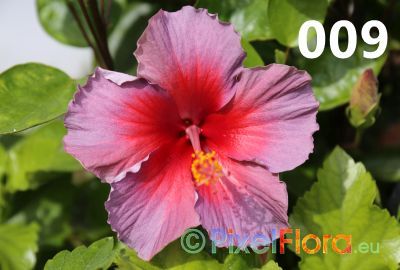 |
Hibiscus 'Delioma' |
 |
Hibiscus 'Doramas' |
 |
Hibiscus 'Fayna' |
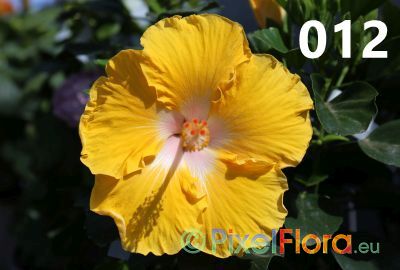 |
Hibiscus 'Gara' |
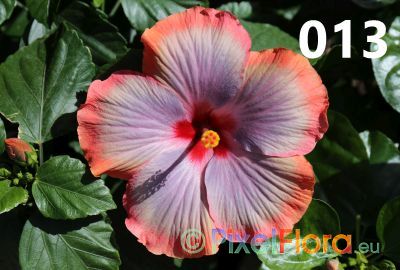 |
Hibiscus 'Genoate' |
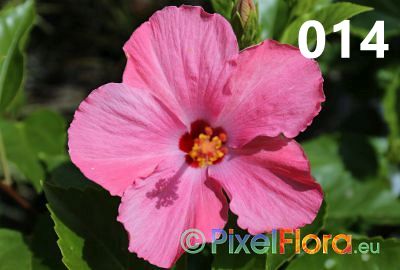 |
Hibiscus 'Idaira' |
 |
Hibiscus 'Iriome' |
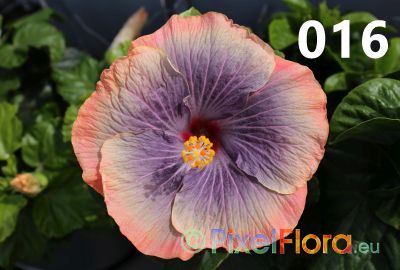 |
Hibiscus 'Ixora' |
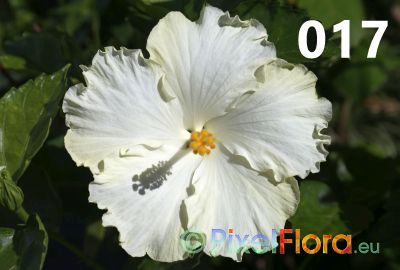 |
Hibiscus 'Jedey' |
 |
Hibiscus 'Kella' |
 |
Hibiscus 'Lera' |
 |
Hibiscus 'Maday' |
 |
Hibiscus 'Nayra' |
 |
Hibiscus 'Nira' |
 |
Hibiscus 'Nisa' |
 |
Hibiscus 'Odalay' |
| 025 | Hibiscus 'Taganana' |
 |
Hibiscus 'Tara' |
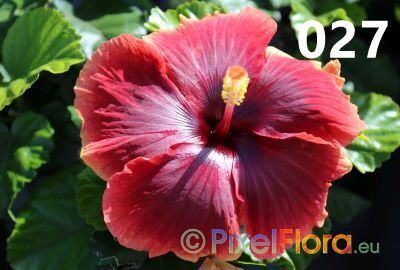 |
Hibiscus 'Timanfaya' |
 |
Hibiscus 'Atis' |
 |
Hibiscus 'Tirma' |
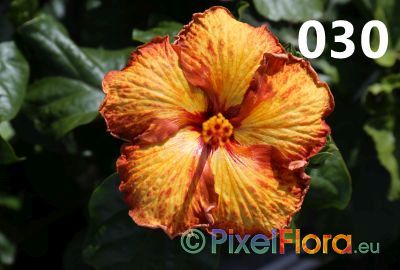 |
Hibiscus 'Ubay' |
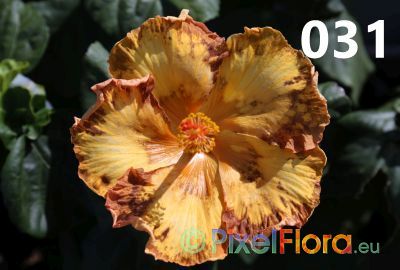 |
(without a cultivar name nor a commercial name) |
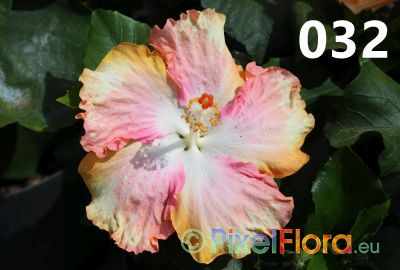 |
(without a cultivar name nor a commercial name) |
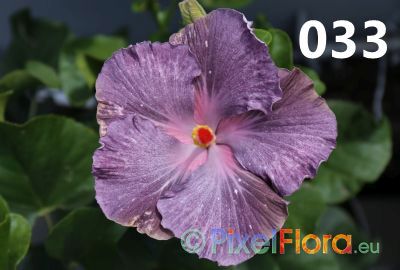 |
Caluca |
 |
(without a cultivar name nor a commercial name) |
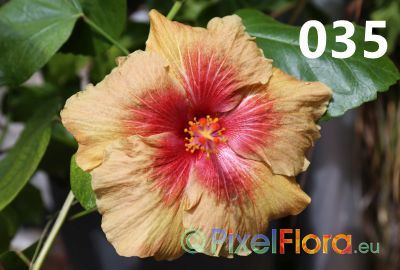 |
(without a cultivar name nor a commercial name) |
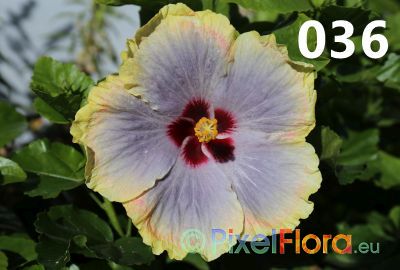 |
(without a cultivar name nor a commercial name) |
 |
Hibiscus 'Yurena' |
| 038 | (without a cultivar name nor a commercial name) |
 |
(without a cultivar name nor a commercial name) |
 |
Hibiscus 'Bavarian Twilight Silver' (cultivar registered at the International Hibiscus Society) |
 |
Hibiscus 'Mattiacis Mustard Princess' (cultivar registered at the International Hibiscus Society) |
 |
Hibiscus 'Ulla's Vampire Galaxy' (cultivar registered at the International Hibiscus Society) |
| 043 | (without a cultivar name nor a commercial name) |
 |
Hibiscus 'Mereyem' |
 |
Hibiscus 'Bencomo' |
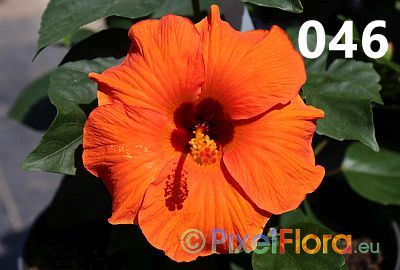 |
Hibiscus 'Moneyba' |
 |
(without a cultivar name nor a commercial name) |
 |
(without a cultivar name nor a commercial name) |
| 049 | (without a cultivar name nor a commercial name) |
| 050 | Hibiscus 'Badayco' |
| 051 | (without a cultivar name nor a commercial name) |
 |
Hibiscus 'Cathaysa' |
 |
Hibiscus 'Iraya' |
 |
Hibiscus 'Tegueste' |
| 055 | (without a cultivar name nor a commercial name) |
 |
(without a cultivar name nor a commercial name) |
 |
(without a cultivar name nor a commercial name) |
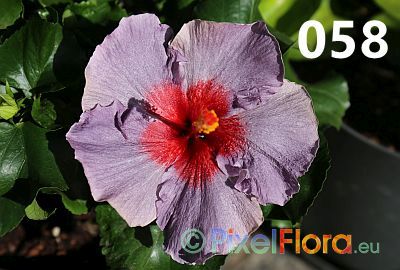 |
(without a cultivar name nor a commercial name) |
 |
Hibiscus 'Yeray' |
 |
Hibiscus 'Acoydán' |
| 061 | (without a cultivar name nor a commercial name) |
 |
Hibiscus 'Guajara' |
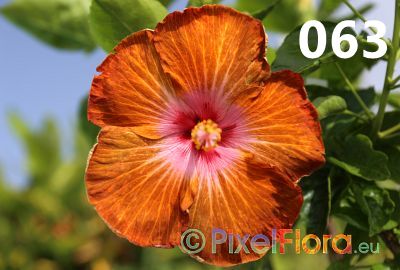 |
(without a cultivar name nor a commercial name) |
 |
Hibiscus 'Texeneri' |
| 065 | (without a cultivar name nor a commercial name) |
| 066 | (without a cultivar name nor a commercial name) |
| 067 | (without a cultivar name nor a commercial name) |
| 068 | (without a cultivar name nor a commercial name) |
| 069 | (without a cultivar name nor a commercial name) |
| 070 | (without a cultivar name nor a commercial name) |
 |
Hibiscus arnottianus (wild species hibiscus from the islands of Oahu and Molokai, Hawaii, USA) |
 |
Hibiscus cooperi 'Nasilai Pink' (color selection of a wild species hibiscus of the island of Erromango, Vanuatu, southern Pacific Ocean) |
 |
Hibiscus schizopetalus (wild species hibiscus native of Kenya, Tanzania, and Mozambique, in East Africa) |
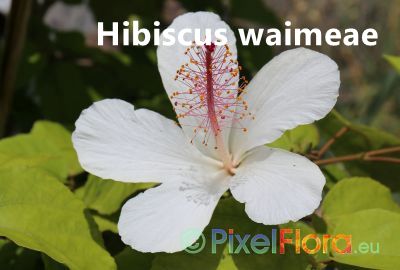 |
Hibiscus waimeae (wild species hibiscus of the island of Kauaʻi, Hawaii, USA) |
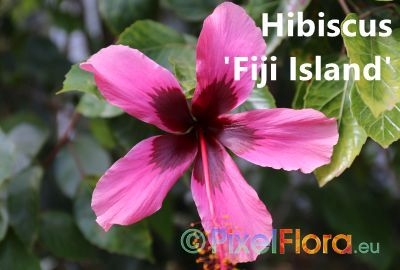 |
Hibiscus 'Fiji Island' (old hybrid of unknown parentage) |
(*) All information on registered cultivars and commercial names is supplied as of 8 Oct 2025 and without any warranty.
 View Basket
View Basket Recover Basket
Recover Basket
































